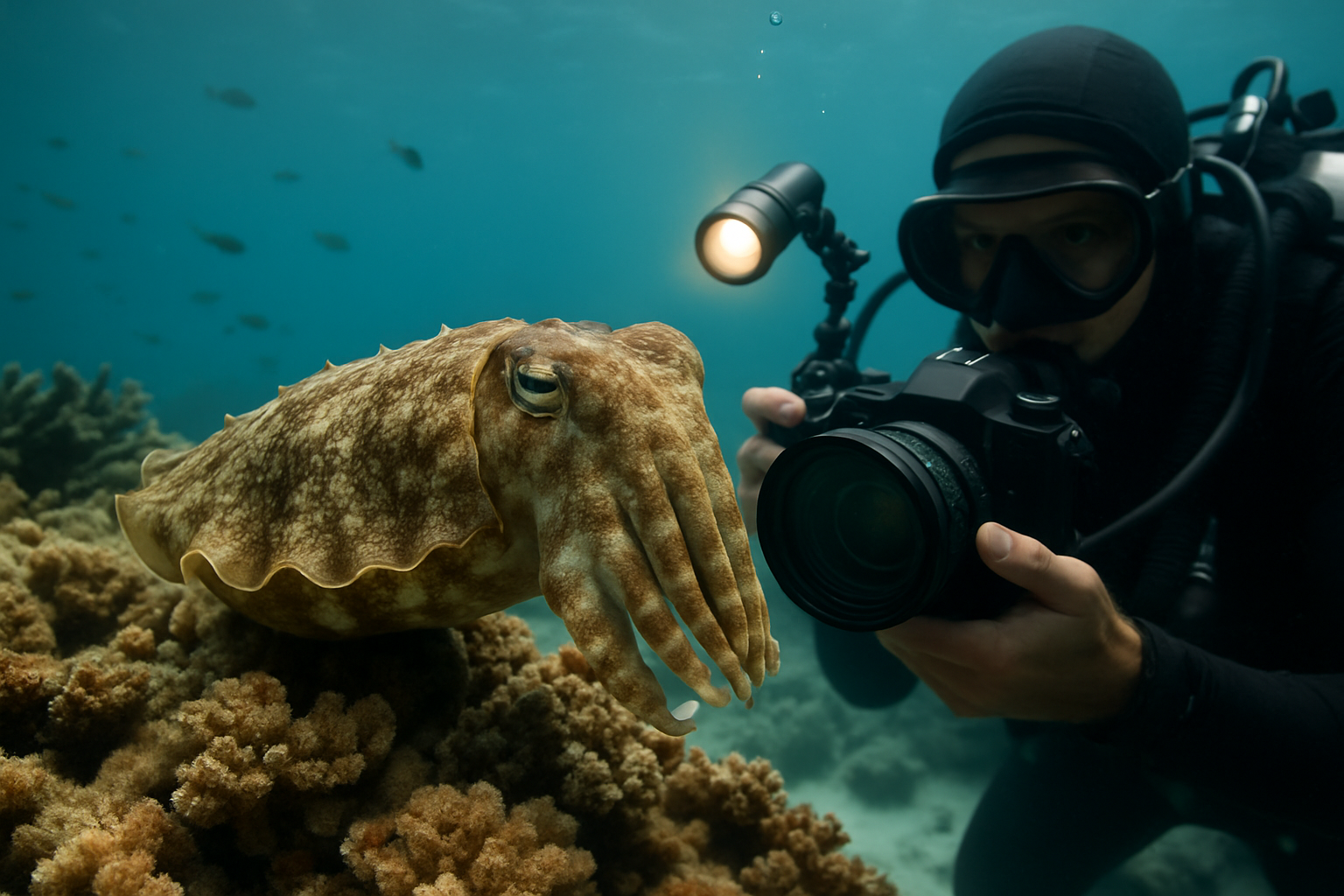Unraveling the Enigma of Cuttlefish Camouflage
Beneath the waves, a master of disguise swims silently, blending seamlessly with its surroundings. The cuttlefish, a cephalopod marvel, has captured the imagination of marine biologists and nature enthusiasts alike with its unparalleled ability to transform its appearance. This article delves into the fascinating world of cuttlefish camouflage, exploring the science behind their color-changing prowess and its implications for both marine ecology and human technology.

The Biological Marvels Behind Cuttlefish Camouflage
At the heart of the cuttlefish’s camouflage abilities lie specialized cells called chromatophores. These pigment-containing sacs are controlled by muscles that can expand or contract, altering the visibility of different colors. Cuttlefish possess up to 200 chromatophores per square millimeter of skin, allowing for incredibly detailed and rapid color changes.
Complementing the chromatophores are iridophores and leucophores, two additional types of cells that contribute to the cuttlefish’s camouflage arsenal. Iridophores reflect light, producing iridescent colors, while leucophores scatter light to create white coloration. This trio of cell types works in concert to produce an astounding array of patterns and hues.
The Neural Orchestra: Coordinating Complex Camouflage
The cuttlefish’s ability to rapidly change its appearance is not just a matter of having the right cellular machinery. It also requires a sophisticated neural network to coordinate these changes. Recent studies have revealed that cuttlefish possess a highly developed visual system and brain that can process complex environmental information in real-time.
Researchers have found that cuttlefish can assess their surroundings and make split-second decisions about which camouflage pattern to display. This process involves analyzing the color, texture, and even the three-dimensional structure of their environment. The cuttlefish’s brain then sends signals to the appropriate skin cells, orchestrating a seamless transformation.
Beyond Camouflage: Communication and Courtship
While camouflage is the most well-known application of the cuttlefish’s color-changing abilities, these creatures also use their dynamic skin for communication and courtship. Male cuttlefish engage in elaborate displays to attract mates, using pulsating patterns and vibrant colors to signal their fitness and dominance.
Interestingly, cuttlefish have been observed using their camouflage abilities in complex social interactions. They can display different patterns on different sides of their body simultaneously, potentially allowing them to send different messages to different observers. This sophisticated form of visual communication adds another layer of intrigue to these already fascinating creatures.
Cuttlefish Camouflage in the Wild: Ecological Implications
The exceptional camouflage abilities of cuttlefish play a crucial role in their survival and ecological interactions. As both predator and prey, cuttlefish rely on their disguise to hunt effectively and evade potential threats. Their ability to blend in with diverse underwater environments, from coral reefs to sandy bottoms, gives them a significant advantage in the competitive marine ecosystem.
Recent studies have shown that cuttlefish can even mimic the movement of underwater vegetation, swaying gently to match the motion of seaweed or coral. This dynamic camouflage further enhances their ability to remain undetected by both prey and predators, highlighting the sophistication of their adaptive strategies.
Biomimicry: Inspiring Human Technology
The remarkable camouflage abilities of cuttlefish have not gone unnoticed by scientists and engineers seeking to develop new technologies. The field of biomimicry, which draws inspiration from nature to solve human challenges, has found a wealth of potential applications in cuttlefish camouflage.
Researchers are currently working on developing artificial skin that can change color and texture, inspired by the cuttlefish’s chromatophores. Such technology could have applications in military camouflage, adaptive clothing, and even architectural design. The estimated market impact of these bio-inspired technologies is substantial, with projections suggesting a multi-billion dollar industry in the coming decades.
Conservation Concerns and Future Research
As with many marine species, cuttlefish face threats from overfishing, habitat destruction, and climate change. The loss of these remarkable creatures would not only deprive the world of a biological marvel but also potentially valuable scientific and technological insights.
Ongoing research into cuttlefish camouflage continues to reveal new aspects of their abilities and biology. Scientists are exploring the genetic basis of their color-changing capabilities, seeking to understand how these complex traits evolved. Additionally, studies are underway to investigate the potential cognitive abilities of cuttlefish, given their sophisticated camouflage behaviors.
In conclusion, the world of cuttlefish camouflage represents a fascinating intersection of biology, ecology, and technology. As we continue to unravel the mysteries of these extraordinary creatures, we gain not only a deeper appreciation for the wonders of nature but also inspiration for innovative solutions to human challenges. The cuttlefish, with its unparalleled mastery of disguise, serves as a reminder of the incredible diversity and ingenuity found in our oceans, underscoring the importance of marine conservation and continued scientific exploration.





